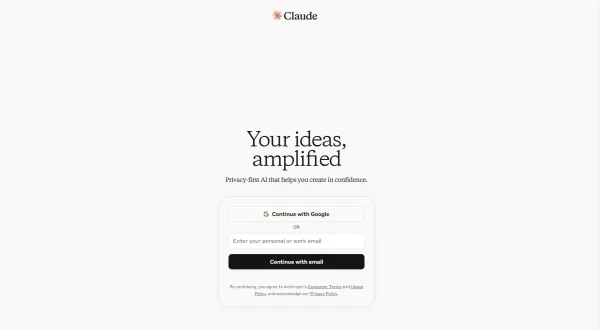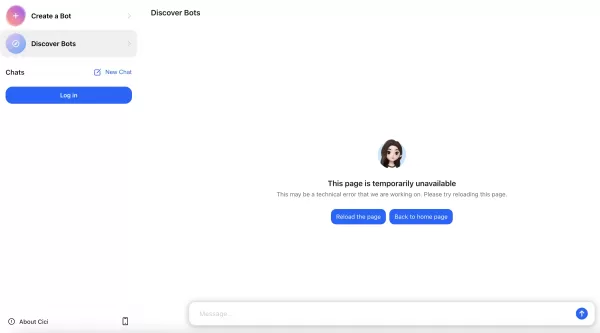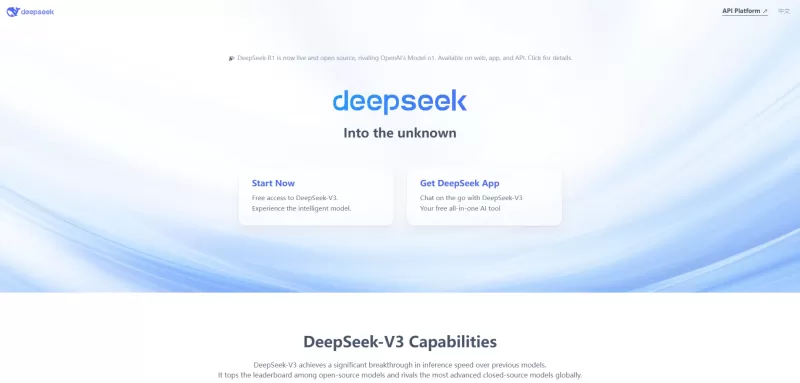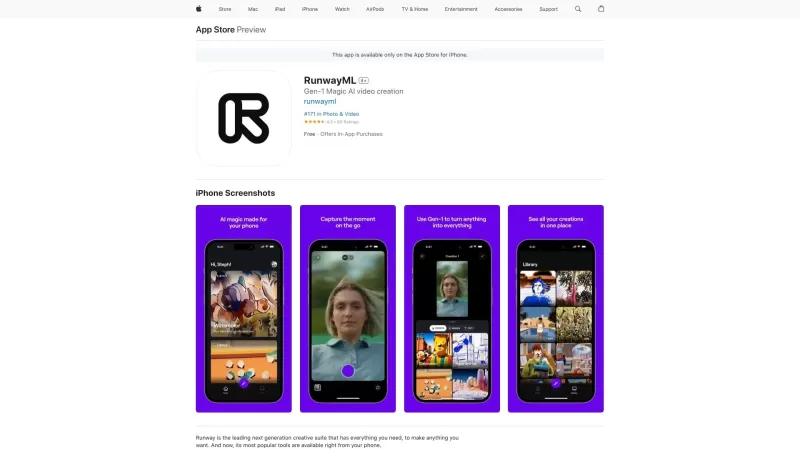Exploring Creative Female Figure Designs in AI-Generated Art
The world of art is in a constant state of flux, and right now, artificial intelligence (AI) is leading the charge into a thrilling new era. AI-generated art is producing breathtaking visuals, especially in the realm of character design. In this blog post, we'll dive deep into the enchanting and detailed universe of AI-generated female figures, examining the diverse styles, themes, and technologies that are shaping this digital art form. From cyberpunk warriors to ethereal goddesses, we'll uncover the endless possibilities that AI-assisted creativity offers.
The Rise of AI in Art
What is AI-Generated Art?
AI-generated art is created using algorithms that have been trained on extensive datasets of existing images. This training allows the AI to learn various styles, patterns, and compositions, enabling it to produce entirely new images based on user-provided prompts or parameters. It's like having a digital artist at your fingertips, capable of crafting unique pieces that blend technology and creativity in fascinating ways.
- Neural Networks: These form the backbone of AI art systems, functioning much like the human brain to process and learn from visual data.
- Generative Models: These models generate new images by mimicking the patterns they've learned from the training data.
- User Prompts: Artists provide text or image prompts to guide the AI in creating specific artwork.
- Style Transfer: AI can apply the style of one image to another, creating unique and striking visual effects.
AI art generation is revolutionizing the art world, offering new creative pathways and challenging traditional concepts of authorship. It's an exhilarating frontier where technology and art intersect to create mesmerizing visual experiences.
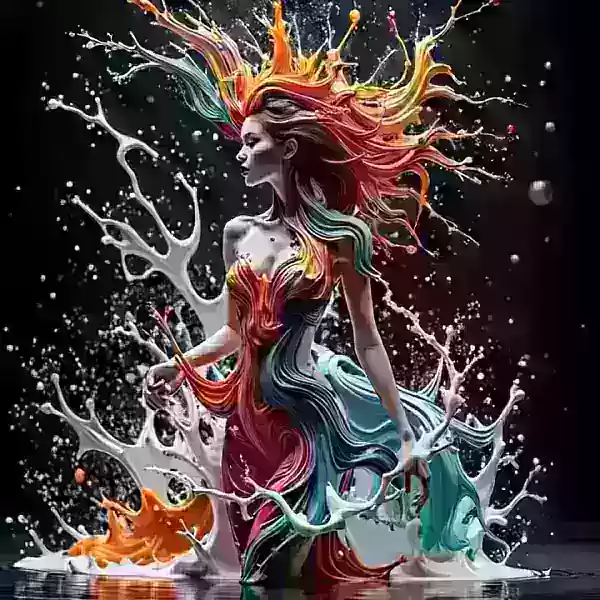
The Technology Behind AI Female Figure Design
Creating stunning AI-generated female figures involves several advanced technologies. Understanding these can give us a glimpse into the magic behind these digital masterpieces.
- Generative Adversarial Networks (GANs): GANs use two neural networks—a generator and a discriminator—to create and refine images through an adversarial process, resulting in increasingly realistic and detailed outputs.
- Diffusion Models: These models add and then remove noise from images, allowing for precise control over image creation and detailed results.
- Text-to-Image Synthesis: Using natural language processing, this technology turns text prompts into visual art, letting users describe their vision in words.
- Style Transfer: This technique allows AI to adopt the style of a specific artist or artwork, blending different aesthetic elements into new creations.
Tools like Midjourney, DALL-E 2, and Stable Diffusion harness these technologies to produce high-quality images. By mastering these, artists can push the boundaries of their creative process and achieve remarkable results.
Exploring Different Styles of AI Female Figure Art
Cyberpunk Warriors and Futuristic Designs
One of the most captivating styles in AI-generated female figure art is the cyberpunk warrior. These images feature empowered women in futuristic armor, wielding high-tech weapons against dystopian backdrops. The AI excels at capturing intricate details in the armor, adding a sense of realism and technological sophistication.
Feature Description Armor Sleek, high-tech armor with intricate details and glowing elements Weaponry Advanced firearms, energy blades, and other futuristic weapons Background Dystopian cityscapes with neon lighting and towering skyscrapers Overall Impression A powerful, empowered woman ready to face the challenges of a technologically advanced future
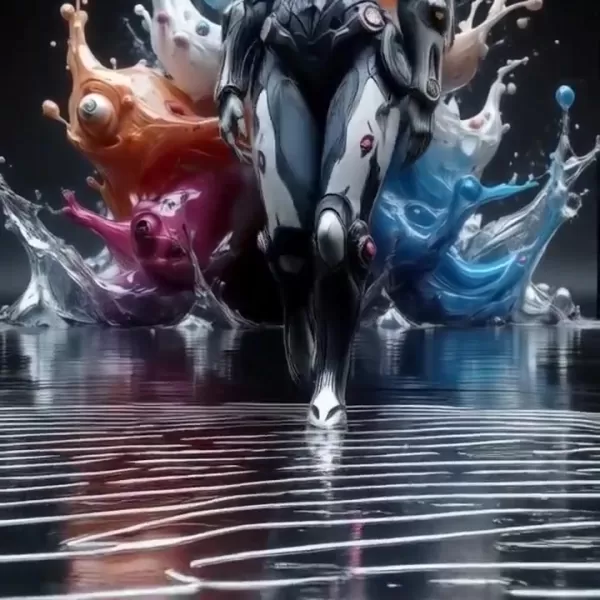
Ethereal Goddesses and Fantasy Realms
On the other end of the spectrum, AI can create ethereal goddesses and figures from fantasy realms. These designs often showcase flowing gowns, delicate features, and magical elements. The AI's ability to generate intricate patterns in clothing and subtle effects like glowing skin or mystical auras adds a dreamlike quality to these figures.
Feature Description Gown Flowing, shimmering fabric with intricate patterns and designs Facial Features Soft, refined features with a gentle expression Aura Subtle glow or aura emanating from the figure Overall Theme A representation of beauty, grace, and connection to the magical realms of fantasy
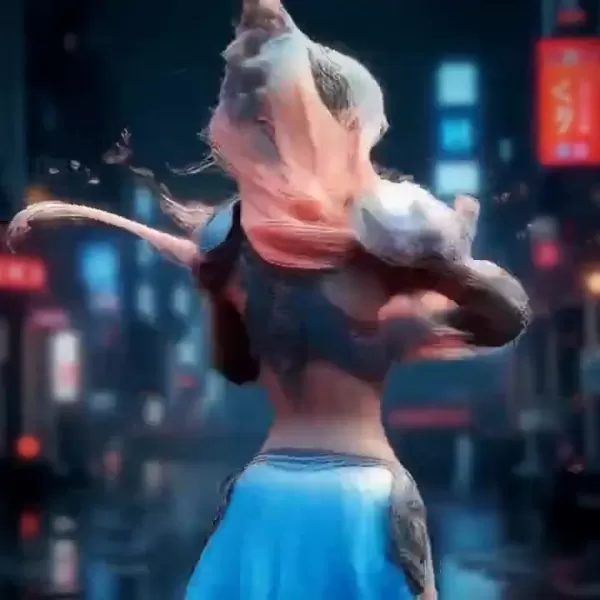
Realistic Portraits and Artistic Interpretations
AI also shines in creating realistic portraits of female figures, capturing a wide range of emotions and cultural backgrounds. The detailed rendering of skin textures, hair, and lighting blurs the line between digital art and photography. Additionally, AI can produce artistic interpretations, incorporating various painting styles and color palettes to create unique visual expressions.
- High Detail: Accurate rendering of skin textures, hair strands, and facial features.
- Diverse Expressions: Capturing a wide range of emotions and cultural backgrounds.
- Varied Styles: Incorporating different painting styles, from impressionism to surrealism.
- Creative Color Palettes: Experimenting with colors to evoke specific moods or themes.
How to Use AI for Generating Art
Choosing the Right AI Art Generator
Selecting the right AI art generator is the first step in creating AI art. Various platforms offer different features, pricing, and styles. Popular options include:
- Midjourney: Known for its artistic and dreamy aesthetic, accessed through a Discord server.
- DALL-E 2: Renowned for generating highly detailed and realistic images from text prompts.
- Stable Diffusion: An open-source generator offering flexibility and customization options.
- NightCafe Creator: Accessible to users of all skill levels with a credit-based system.
Consider your artistic goals, budget, and technical expertise when choosing a platform. Experiment to find the best fit for your creative needs.
Crafting Effective Prompts
The secret to high-quality AI art lies in crafting effective prompts. These text descriptions guide the AI in creating the desired image. The more specific and detailed your prompt, the better the AI can understand and execute your vision.
- Be Specific: Use descriptive language to specify key elements like subject, style, and mood.
- Experiment with Keywords: Try different keywords to see how they affect the results.
- Include Artistic Styles: Specify styles like impressionism or cyberpunk to guide the AI's aesthetic choices.
- Iterate and Refine: Review generated images and adjust prompts to achieve the desired outcome.
Example prompts for female figure art include:
- "Cyberpunk warrior woman with neon armor, dystopian cityscape background."
- "Ethereal goddess in a flowing gown, magical aura, fantasy landscape."
- "Realistic portrait of a woman with a contemplative expression, natural lighting."
- "Abstract interpretation of a female figure, vibrant colors, cubist style."
Pricing of AI Art Generators
Understanding the Costs
The pricing of AI art generators varies based on the platform and usage. Most offer subscription plans or a credit-based system. Understanding these costs helps in budgeting your creative projects.
- Midjourney: Subscription plans with varying GPU hours per month, with higher tiers offering more features.
- DALL-E 2: Uses a credit system where each image generation consumes credits, available in bundles.
- Stable Diffusion: Free to use, but running it requires computing resources, which may incur costs if using cloud services.
- NightCafe Creator: Offers free daily credits and options to purchase additional credits, with varying costs for different algorithms.
Before committing, review the pricing plans and usage policies to choose the most cost-effective option for your needs.
Pros and Cons of AI-Generated Art
Pros
- Unprecedented creative possibilities for unique and diverse designs.
- Increased efficiency and speed in the art creation process.
- Accessibility for users of all skill levels, democratizing art creation.
- Ability to explore a wide range of artistic styles and themes.
- Cost-effectiveness, making high-quality artwork more accessible.
Cons
- Potential for biases if the training data is not diverse or representative.
- Concerns about the impact on human artists, including displacement and devaluation of their work.
- Legal uncertainties surrounding copyright and ownership of AI-generated art.
- Lack of human emotion and intention in the generated images.
- Dependence on technology and algorithms, limiting the artist's control over the creative process.
Core Features of AI Art Generators
Exploring the Key Capabilities
AI art generators come equipped with a variety of features that empower artists to create compelling artwork:
- Text-to-Image Generation: Create images from text prompts, describing your vision in words.
- Image Editing and Manipulation: Tools for refining and manipulating generated images, such as cropping and color correction.
- Style Transfer: Apply the style of one image to another, creating unique visual effects.
- Inpainting: Selectively modify parts of an image while preserving the overall context.
- Upscaling: Increase image resolution without losing detail for sharper results.
- Community Features: Platforms for sharing creations, providing feedback, and collaborating with other artists.
Use Cases for AI-Generated Female Figures
Creative Applications
AI-generated female figures have numerous creative applications across industries:
- Character Design: Creating unique characters for video games, animations, and graphic novels.
- Fashion Design: Generating innovative clothing and accessory designs.
- Advertising: Producing visually striking ads featuring diverse female figures.
- Digital Art: Creating original digital artworks for sale or exhibition.
- Concept Art: Developing concept art for movies, TV shows, and other visual media.
- Personal Expression: Exploring personal artistic visions and creating unique self-portraits.
Frequently Asked Questions
What is the legal status of AI-generated art?
The legal status of AI-generated art is complex and evolving. While copyright laws protect original works, the extent to which AI-generated art qualifies for protection is still debated. Some argue it should be public domain, while others believe the user guiding the AI should be considered the author. Ongoing court cases will likely shape future copyright laws regarding AI art.
Are there ethical considerations for AI-generated art?
Yes, there are significant ethical considerations. AI can perpetuate biases if the training data is not diverse, potentially reinforcing harmful stereotypes. There's also concern about AI's impact on human artists, with fears of displacement and devaluation of their work. However, AI can also be a valuable tool, augmenting human creativity and allowing focus on higher-level tasks. Balancing technological innovation with ethical responsibility is crucial for ensuring AI art benefits society.
Related article
 Topaz Photo AI Elevates Your Photos with Advanced AI Technology
Want professional-quality photo enhancements without the steep learning curve? Topaz Photo AI revolutionizes image editing by combining powerful AI technologies into one intuitive interface. This all-in-one solution merges Topaz Labs' acclaimed DeNoi
Topaz Photo AI Elevates Your Photos with Advanced AI Technology
Want professional-quality photo enhancements without the steep learning curve? Topaz Photo AI revolutionizes image editing by combining powerful AI technologies into one intuitive interface. This all-in-one solution merges Topaz Labs' acclaimed DeNoi
 Helix AI System by Figure Set to Transform Robotics Industry in 2025
The robotics field is undergoing unprecedented transformation as artificial intelligence redefines operational capabilities. Figure AI's groundbreaking Helix system demonstrates performance that potentially eclipses human abilities in specific applic
Helix AI System by Figure Set to Transform Robotics Industry in 2025
The robotics field is undergoing unprecedented transformation as artificial intelligence redefines operational capabilities. Figure AI's groundbreaking Helix system demonstrates performance that potentially eclipses human abilities in specific applic
 Master Photoshop Resume Design: Step-by-Step Professional Template Guide
Creating a Standout Resume in Today's Competitive MarketIn today's competitive job market, professional resume design plays a crucial role in landing interview opportunities. While numerous online tools provide ready-made templates, designing your re
Comments (5)
0/200
Master Photoshop Resume Design: Step-by-Step Professional Template Guide
Creating a Standout Resume in Today's Competitive MarketIn today's competitive job market, professional resume design plays a crucial role in landing interview opportunities. While numerous online tools provide ready-made templates, designing your re
Comments (5)
0/200
![TerryPerez]() TerryPerez
TerryPerez
 April 28, 2025 at 11:43:15 AM EDT
April 28, 2025 at 11:43:15 AM EDT
एआई द्वारा बनाए गए महिला किरदारों के डिज़ाइन कमाल के हैं! 🖌️ लेकिन क्या ये तकनीक पारंपरिक कलाकारों को पीछे छोड़ देगी? थोड़ा डरावना भी लगता है।


 0
0
![AnthonyGonzález]() AnthonyGonzález
AnthonyGonzález
 April 28, 2025 at 8:50:19 AM EDT
April 28, 2025 at 8:50:19 AM EDT
Les designs de personnages féminins par IA sont époustouflants ! 😊 C’est incroyable de voir jusqu’où la tech peut aller, mais ça soulève des questions sur l’authenticité de l’art.


 0
0
![GeorgeMiller]() GeorgeMiller
GeorgeMiller
 April 27, 2025 at 6:18:55 AM EDT
April 27, 2025 at 6:18:55 AM EDT
¡Qué fascinante el diseño de personajes femeninos por IA! 😮 Los visuales son impresionantes, pero me preocupa si esto reemplazará a los artistas humanos.


 0
0
![DouglasMartinez]() DouglasMartinez
DouglasMartinez
 April 26, 2025 at 8:52:56 PM EDT
April 26, 2025 at 8:52:56 PM EDT
Wow, AI-generated female character designs sound so cool! 😍 The creativity in these visuals is mind-blowing, but I wonder how artists feel about AI taking the lead. Exciting yet kinda scary!


 0
0
![EmmaTurner]() EmmaTurner
EmmaTurner
 April 26, 2025 at 7:42:22 PM EDT
April 26, 2025 at 7:42:22 PM EDT
AIが作る女性キャラのデザイン、めっちゃ魅力的!✨ ビジュアルの美しさに驚くけど、倫理的な問題も気になるね。未来の芸術はどうなるんだろう?


 0
0
The world of art is in a constant state of flux, and right now, artificial intelligence (AI) is leading the charge into a thrilling new era. AI-generated art is producing breathtaking visuals, especially in the realm of character design. In this blog post, we'll dive deep into the enchanting and detailed universe of AI-generated female figures, examining the diverse styles, themes, and technologies that are shaping this digital art form. From cyberpunk warriors to ethereal goddesses, we'll uncover the endless possibilities that AI-assisted creativity offers.
The Rise of AI in Art
What is AI-Generated Art?
AI-generated art is created using algorithms that have been trained on extensive datasets of existing images. This training allows the AI to learn various styles, patterns, and compositions, enabling it to produce entirely new images based on user-provided prompts or parameters. It's like having a digital artist at your fingertips, capable of crafting unique pieces that blend technology and creativity in fascinating ways.
- Neural Networks: These form the backbone of AI art systems, functioning much like the human brain to process and learn from visual data.
- Generative Models: These models generate new images by mimicking the patterns they've learned from the training data.
- User Prompts: Artists provide text or image prompts to guide the AI in creating specific artwork.
- Style Transfer: AI can apply the style of one image to another, creating unique and striking visual effects.
AI art generation is revolutionizing the art world, offering new creative pathways and challenging traditional concepts of authorship. It's an exhilarating frontier where technology and art intersect to create mesmerizing visual experiences.

The Technology Behind AI Female Figure Design
Creating stunning AI-generated female figures involves several advanced technologies. Understanding these can give us a glimpse into the magic behind these digital masterpieces.
- Generative Adversarial Networks (GANs): GANs use two neural networks—a generator and a discriminator—to create and refine images through an adversarial process, resulting in increasingly realistic and detailed outputs.
- Diffusion Models: These models add and then remove noise from images, allowing for precise control over image creation and detailed results.
- Text-to-Image Synthesis: Using natural language processing, this technology turns text prompts into visual art, letting users describe their vision in words.
- Style Transfer: This technique allows AI to adopt the style of a specific artist or artwork, blending different aesthetic elements into new creations.
Tools like Midjourney, DALL-E 2, and Stable Diffusion harness these technologies to produce high-quality images. By mastering these, artists can push the boundaries of their creative process and achieve remarkable results.
Exploring Different Styles of AI Female Figure Art
Cyberpunk Warriors and Futuristic Designs
One of the most captivating styles in AI-generated female figure art is the cyberpunk warrior. These images feature empowered women in futuristic armor, wielding high-tech weapons against dystopian backdrops. The AI excels at capturing intricate details in the armor, adding a sense of realism and technological sophistication.
| Feature | Description |
|---|---|
| Armor | Sleek, high-tech armor with intricate details and glowing elements |
| Weaponry | Advanced firearms, energy blades, and other futuristic weapons |
| Background | Dystopian cityscapes with neon lighting and towering skyscrapers |
| Overall Impression | A powerful, empowered woman ready to face the challenges of a technologically advanced future |

Ethereal Goddesses and Fantasy Realms
On the other end of the spectrum, AI can create ethereal goddesses and figures from fantasy realms. These designs often showcase flowing gowns, delicate features, and magical elements. The AI's ability to generate intricate patterns in clothing and subtle effects like glowing skin or mystical auras adds a dreamlike quality to these figures.
| Feature | Description |
|---|---|
| Gown | Flowing, shimmering fabric with intricate patterns and designs |
| Facial Features | Soft, refined features with a gentle expression |
| Aura | Subtle glow or aura emanating from the figure |
| Overall Theme | A representation of beauty, grace, and connection to the magical realms of fantasy |

Realistic Portraits and Artistic Interpretations
AI also shines in creating realistic portraits of female figures, capturing a wide range of emotions and cultural backgrounds. The detailed rendering of skin textures, hair, and lighting blurs the line between digital art and photography. Additionally, AI can produce artistic interpretations, incorporating various painting styles and color palettes to create unique visual expressions.
- High Detail: Accurate rendering of skin textures, hair strands, and facial features.
- Diverse Expressions: Capturing a wide range of emotions and cultural backgrounds.
- Varied Styles: Incorporating different painting styles, from impressionism to surrealism.
- Creative Color Palettes: Experimenting with colors to evoke specific moods or themes.
How to Use AI for Generating Art
Choosing the Right AI Art Generator
Selecting the right AI art generator is the first step in creating AI art. Various platforms offer different features, pricing, and styles. Popular options include:
- Midjourney: Known for its artistic and dreamy aesthetic, accessed through a Discord server.
- DALL-E 2: Renowned for generating highly detailed and realistic images from text prompts.
- Stable Diffusion: An open-source generator offering flexibility and customization options.
- NightCafe Creator: Accessible to users of all skill levels with a credit-based system.
Consider your artistic goals, budget, and technical expertise when choosing a platform. Experiment to find the best fit for your creative needs.
Crafting Effective Prompts
The secret to high-quality AI art lies in crafting effective prompts. These text descriptions guide the AI in creating the desired image. The more specific and detailed your prompt, the better the AI can understand and execute your vision.
- Be Specific: Use descriptive language to specify key elements like subject, style, and mood.
- Experiment with Keywords: Try different keywords to see how they affect the results.
- Include Artistic Styles: Specify styles like impressionism or cyberpunk to guide the AI's aesthetic choices.
- Iterate and Refine: Review generated images and adjust prompts to achieve the desired outcome.
Example prompts for female figure art include:
- "Cyberpunk warrior woman with neon armor, dystopian cityscape background."
- "Ethereal goddess in a flowing gown, magical aura, fantasy landscape."
- "Realistic portrait of a woman with a contemplative expression, natural lighting."
- "Abstract interpretation of a female figure, vibrant colors, cubist style."
Pricing of AI Art Generators
Understanding the Costs
The pricing of AI art generators varies based on the platform and usage. Most offer subscription plans or a credit-based system. Understanding these costs helps in budgeting your creative projects.
- Midjourney: Subscription plans with varying GPU hours per month, with higher tiers offering more features.
- DALL-E 2: Uses a credit system where each image generation consumes credits, available in bundles.
- Stable Diffusion: Free to use, but running it requires computing resources, which may incur costs if using cloud services.
- NightCafe Creator: Offers free daily credits and options to purchase additional credits, with varying costs for different algorithms.
Before committing, review the pricing plans and usage policies to choose the most cost-effective option for your needs.
Pros and Cons of AI-Generated Art
Pros
- Unprecedented creative possibilities for unique and diverse designs.
- Increased efficiency and speed in the art creation process.
- Accessibility for users of all skill levels, democratizing art creation.
- Ability to explore a wide range of artistic styles and themes.
- Cost-effectiveness, making high-quality artwork more accessible.
Cons
- Potential for biases if the training data is not diverse or representative.
- Concerns about the impact on human artists, including displacement and devaluation of their work.
- Legal uncertainties surrounding copyright and ownership of AI-generated art.
- Lack of human emotion and intention in the generated images.
- Dependence on technology and algorithms, limiting the artist's control over the creative process.
Core Features of AI Art Generators
Exploring the Key Capabilities
AI art generators come equipped with a variety of features that empower artists to create compelling artwork:
- Text-to-Image Generation: Create images from text prompts, describing your vision in words.
- Image Editing and Manipulation: Tools for refining and manipulating generated images, such as cropping and color correction.
- Style Transfer: Apply the style of one image to another, creating unique visual effects.
- Inpainting: Selectively modify parts of an image while preserving the overall context.
- Upscaling: Increase image resolution without losing detail for sharper results.
- Community Features: Platforms for sharing creations, providing feedback, and collaborating with other artists.
Use Cases for AI-Generated Female Figures
Creative Applications
AI-generated female figures have numerous creative applications across industries:
- Character Design: Creating unique characters for video games, animations, and graphic novels.
- Fashion Design: Generating innovative clothing and accessory designs.
- Advertising: Producing visually striking ads featuring diverse female figures.
- Digital Art: Creating original digital artworks for sale or exhibition.
- Concept Art: Developing concept art for movies, TV shows, and other visual media.
- Personal Expression: Exploring personal artistic visions and creating unique self-portraits.
Frequently Asked Questions
What is the legal status of AI-generated art?
The legal status of AI-generated art is complex and evolving. While copyright laws protect original works, the extent to which AI-generated art qualifies for protection is still debated. Some argue it should be public domain, while others believe the user guiding the AI should be considered the author. Ongoing court cases will likely shape future copyright laws regarding AI art.
Are there ethical considerations for AI-generated art?
Yes, there are significant ethical considerations. AI can perpetuate biases if the training data is not diverse, potentially reinforcing harmful stereotypes. There's also concern about AI's impact on human artists, with fears of displacement and devaluation of their work. However, AI can also be a valuable tool, augmenting human creativity and allowing focus on higher-level tasks. Balancing technological innovation with ethical responsibility is crucial for ensuring AI art benefits society.
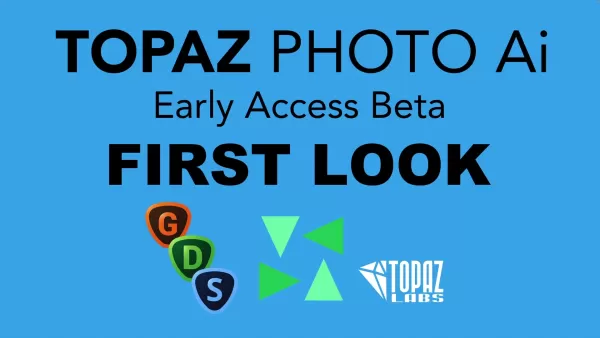 Topaz Photo AI Elevates Your Photos with Advanced AI Technology
Want professional-quality photo enhancements without the steep learning curve? Topaz Photo AI revolutionizes image editing by combining powerful AI technologies into one intuitive interface. This all-in-one solution merges Topaz Labs' acclaimed DeNoi
Topaz Photo AI Elevates Your Photos with Advanced AI Technology
Want professional-quality photo enhancements without the steep learning curve? Topaz Photo AI revolutionizes image editing by combining powerful AI technologies into one intuitive interface. This all-in-one solution merges Topaz Labs' acclaimed DeNoi
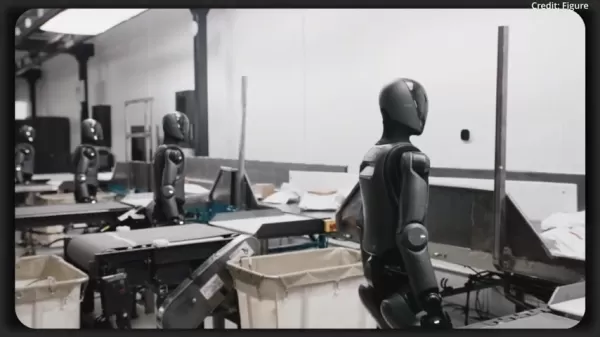 Helix AI System by Figure Set to Transform Robotics Industry in 2025
The robotics field is undergoing unprecedented transformation as artificial intelligence redefines operational capabilities. Figure AI's groundbreaking Helix system demonstrates performance that potentially eclipses human abilities in specific applic
Helix AI System by Figure Set to Transform Robotics Industry in 2025
The robotics field is undergoing unprecedented transformation as artificial intelligence redefines operational capabilities. Figure AI's groundbreaking Helix system demonstrates performance that potentially eclipses human abilities in specific applic
 Master Photoshop Resume Design: Step-by-Step Professional Template Guide
Creating a Standout Resume in Today's Competitive MarketIn today's competitive job market, professional resume design plays a crucial role in landing interview opportunities. While numerous online tools provide ready-made templates, designing your re
Master Photoshop Resume Design: Step-by-Step Professional Template Guide
Creating a Standout Resume in Today's Competitive MarketIn today's competitive job market, professional resume design plays a crucial role in landing interview opportunities. While numerous online tools provide ready-made templates, designing your re
 April 28, 2025 at 11:43:15 AM EDT
April 28, 2025 at 11:43:15 AM EDT
एआई द्वारा बनाए गए महिला किरदारों के डिज़ाइन कमाल के हैं! 🖌️ लेकिन क्या ये तकनीक पारंपरिक कलाकारों को पीछे छोड़ देगी? थोड़ा डरावना भी लगता है।


 0
0
 April 28, 2025 at 8:50:19 AM EDT
April 28, 2025 at 8:50:19 AM EDT
Les designs de personnages féminins par IA sont époustouflants ! 😊 C’est incroyable de voir jusqu’où la tech peut aller, mais ça soulève des questions sur l’authenticité de l’art.


 0
0
 April 27, 2025 at 6:18:55 AM EDT
April 27, 2025 at 6:18:55 AM EDT
¡Qué fascinante el diseño de personajes femeninos por IA! 😮 Los visuales son impresionantes, pero me preocupa si esto reemplazará a los artistas humanos.


 0
0
 April 26, 2025 at 8:52:56 PM EDT
April 26, 2025 at 8:52:56 PM EDT
Wow, AI-generated female character designs sound so cool! 😍 The creativity in these visuals is mind-blowing, but I wonder how artists feel about AI taking the lead. Exciting yet kinda scary!


 0
0
 April 26, 2025 at 7:42:22 PM EDT
April 26, 2025 at 7:42:22 PM EDT
AIが作る女性キャラのデザイン、めっちゃ魅力的!✨ ビジュアルの美しさに驚くけど、倫理的な問題も気になるね。未来の芸術はどうなるんだろう?


 0
0
